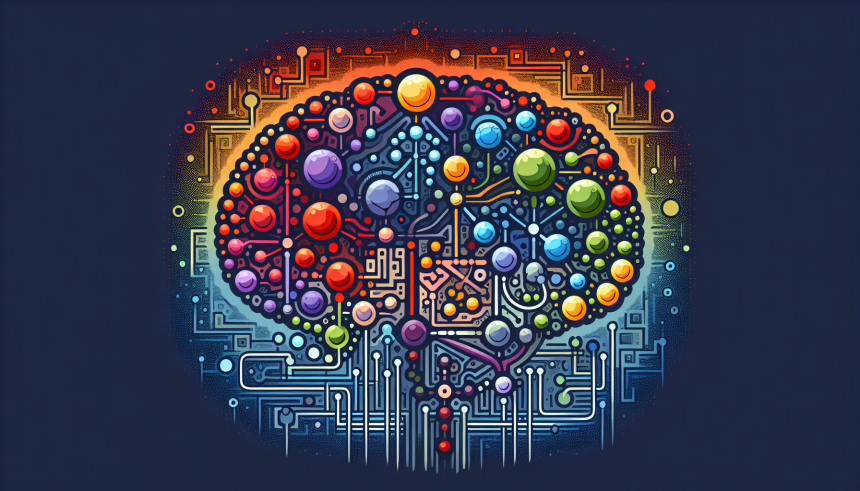Understanding Retrieval Augmented Generation (RAG)
Retrieval Augmented Generation (RAG) is an advanced methodology in the realm of artificial intelligence that combines the power of information retrieval with generative models. This hybrid approach enhances AI’s ability to deliver accurate, contextually relevant, and informative responses based on vast amounts of external knowledge.
The Mechanism of RAG
RAG’s architecture merges two pivotal components: a retriever and a generator. The retriever searches a large knowledge base to find relevant documents, while the generator synthesizes a coherent response based on the retrieved data.
-
Retriever: This component uses various techniques to locate documents pertinent to a user’s query. A common implementation involves employing embedding-based approaches, where both queries and documents are transformed into dense vector representations. Algorithms like BM25 and dense retrieval methods (like Dense Passage Retrieval) are typically utilized for efficient document retrieval.
-
Generator: Once the retriever has selected the most relevant pieces of information, the generator takes on the task of crafting a natural language response. This element often leverages transformer-based architectures such as BERT or GPT-3, utilizing the retrieved context to enhance the response.
Benefits of RAG
Adopting Retrieval Augmented Generation provides several benefits:
-
Improved Accuracy: By integrating real-time information from extensive databases, RAG significantly reduces the likelihood of generating erroneous or outdated information. This is particularly crucial in fields like healthcare, law, or technology where precision is paramount.
-
Enhanced Contextuality: Traditional generative models can struggle with context retention across long interactions. RAG’s capability to pull fresh data helps create responses that are not only relevant but also rich in context.
-
Dynamic Adaptation: RAG systems are adaptable, making them suitable for diverse applications from chatbots to search engines. This adaptability ensures that the AI can continuously learn and improve over time.
Applications of RAG
Retrieval Augmented Generation is gaining traction in various industries due to its versatile and robust nature:
-
Customer Support: RAG-enhanced chatbots can provide accurate responses to customer inquiries by pulling necessary information from documentation, FAQs, and other resources. This minimizes response time and improves user satisfaction.
-
Content Creation: Journalists and content creators can leverage RAG technologies to fetch relevant articles, studies, or reports to support their narratives. This provides a basis for informed writing, ensuring that the information shared is updated and validated.
-
Healthcare: In medicine, RAG can assist professionals by retrieving up-to-date research papers and guidelines. Given the rapid evolution of medical knowledge, having access to recent studies can profoundly influence clinical decisions.
-
Education: RAG systems can serve as intelligent tutoring systems, retrieving relevant educational material and generating explanations tailored to a student’s unique needs. This personalized approach enhances learning outcomes significantly.
Challenges in Implementing RAG
Despite its advantages, deploying RAG systems is not without its challenges:
-
Resource Intensity: Training RAG models requires substantial computational resources and high-quality datasets. The dual nature of retrieval and generation demands more sophisticated infrastructure than traditional models.
-
Complexity of Integration: Merging retriever and generator components can lead to complexity in system design. Balancing the two such that the generated content complements the retrieved data is a nuanced task requiring iterative refinements.
-
Dependence on External Data: The performance of a RAG model is heavily influenced by the quality and relevance of the underlying knowledge base. Ensuring that this data remains current and comprehensive is an ongoing challenge.
Future Directions for RAG
As technology continues to advance, the potential for RAG models is expanding. Here are a few areas poised for growth:
-
Multimodal Retrieval: Future systems may integrate various data modalities, such as images and videos alongside text, to enhance the richness of the generated content. This could enable AI to respond to queries about visual content or provide explanations based on diagrams or demonstrations.
-
Real-Time Learning: Incorporating real-time learning mechanisms where the RAG system can update its retrieval database on-the-fly could significantly enhance its responsiveness and accuracy in fast-evolving domains.
-
Ethical and Bias Considerations: As AI systems become more prevalent in critical sectors, addressing ethical concerns and biases in the underlying data becomes vital. Future RAG frameworks must focus on developing fair and transparent models.
Conclusion: RAG’s Role in the AI Landscape
RAG represents a significant leap forward in the capabilities of artificial intelligence systems, offering a robust framework for harnessing external knowledge to generate contextually relevant responses. By aligning the retrieval of current information with the generative capabilities of AI, RAG enhances the quality and reliability of the interactions users have with these systems. Its applications are far-reaching, holding potential for specialization in various fields while also posing unique challenges that developers must navigate. Advancements in this area will continue to shape the evolution of AI, impacting how information is accessed and utilized in the digital age.


